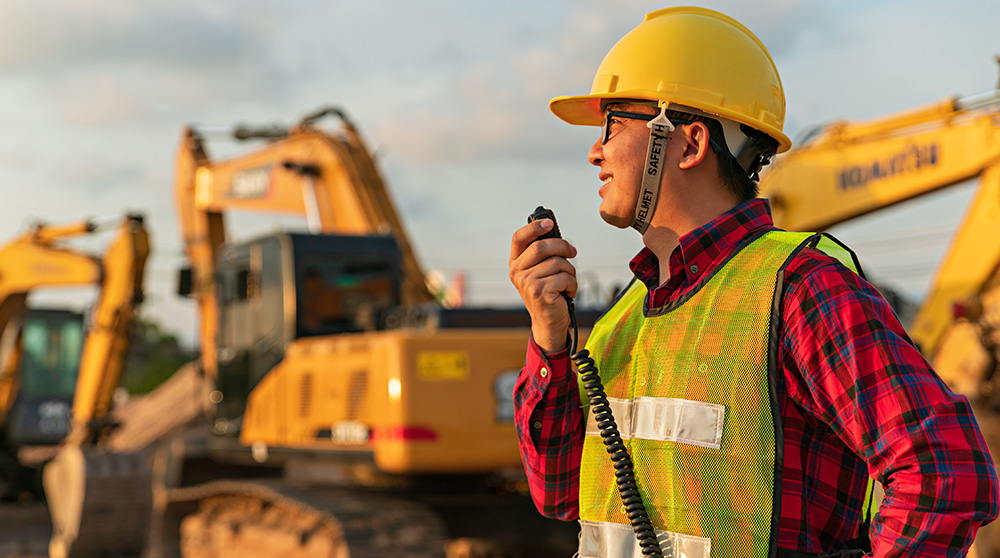Avoiding OSHA’s Fatal Four: 5 tips to prevent being struck by an object.

Did you know being struck by an object is one of the leading causes of construction-related deaths? That’s why this hazard falls under the Occupational Safety and Health Administration’s list of Fatal Four construction risks. How do struck-by events happen and what types of accidents and injuries can result? OSHA shares, “Workers are most often struck by heavy equipment and vehicles like trucks and cranes, falling or flying objects like tools and flying particles, or concrete or masonry walls that are being constructed.”
While these struck-by hazards exist, there are ways to help prevent injuries and keep your team protected on the jobsite. We’ve rounded up a list of five safety tips for your crew.
Provide and enforce personal protective equipment (PPE). PPE is designed to protect workers from any possible risk on the worksite. Workers and site visitors should wear hard hats that fit properly. If they’re in areas of low visibility or it’s dark outside, bright vests or reflective gear should also be worn. Even when working in areas that don’t require PPE, it’s always better to wear it to ensure you’re easily identifiable and properly protected from objects that could fall or swing unexpectedly.
Use barricades and signs to mark off work zones. One of the best ways to reduce the risk is to properly barricade areas that have a risk of falling objects. It will also help other team members, site visitors, and pedestrians know not to enter marked areas that could be dangerous. Set up signs and barricades around elevated work zones to alert people below to keep an eye out for falling objects. Ensure barricades are sturdy enough to withstand strong winds or any other type of impact that could knock them over or blow them away.
Secure all tools and equipment. Equipment that’s not secured can easily be knocked off elevated surfaces and harm workers or pedestrians below. Workers should make a routine of securing all equipment and tools while in use and at the end of the day. In addition, regularly inspect tools and equipment to keep them in safe working order. If you notice damage to equipment or a device’s protective components, seek out repairs or replacements.
Establish a clear communication system. Construction sites are busy and loud, which makes communication challenging. To avoid unintentional injuries, establish effective communication systems. Hand signals, warning lights, two-way radios, overhead speakers, shorthand terminology, danger words: all of them can be helpful to inform your crew of hazardous situations.
Train everyone. Training every new employee and holding refresher courses are vital parts of keeping the worksite safe. Offer regular safety trainings, risk assessments, and PPE talks. If a worker hasn’t been adequately trained or doesn’t have the credentials for a certain task or area, set protocol to keep them away. Encourage workers to talk about and be aware of other team members’ tasks and areas of potential risk.
Construction sites are full of hazards, but there are things you and your team can do to improve safety. The first is following the tips above to reduce the risk of being struck by an object. The next is learning how to avoid OSHA’s other Fatal Four hazards, such as electrocution and falls. Finally, some insurers have safety services experts who will come to your jobsite to identify risks and offer solutions.
Have questions about our services or coverage? Talk to one of our local, independent agents.







